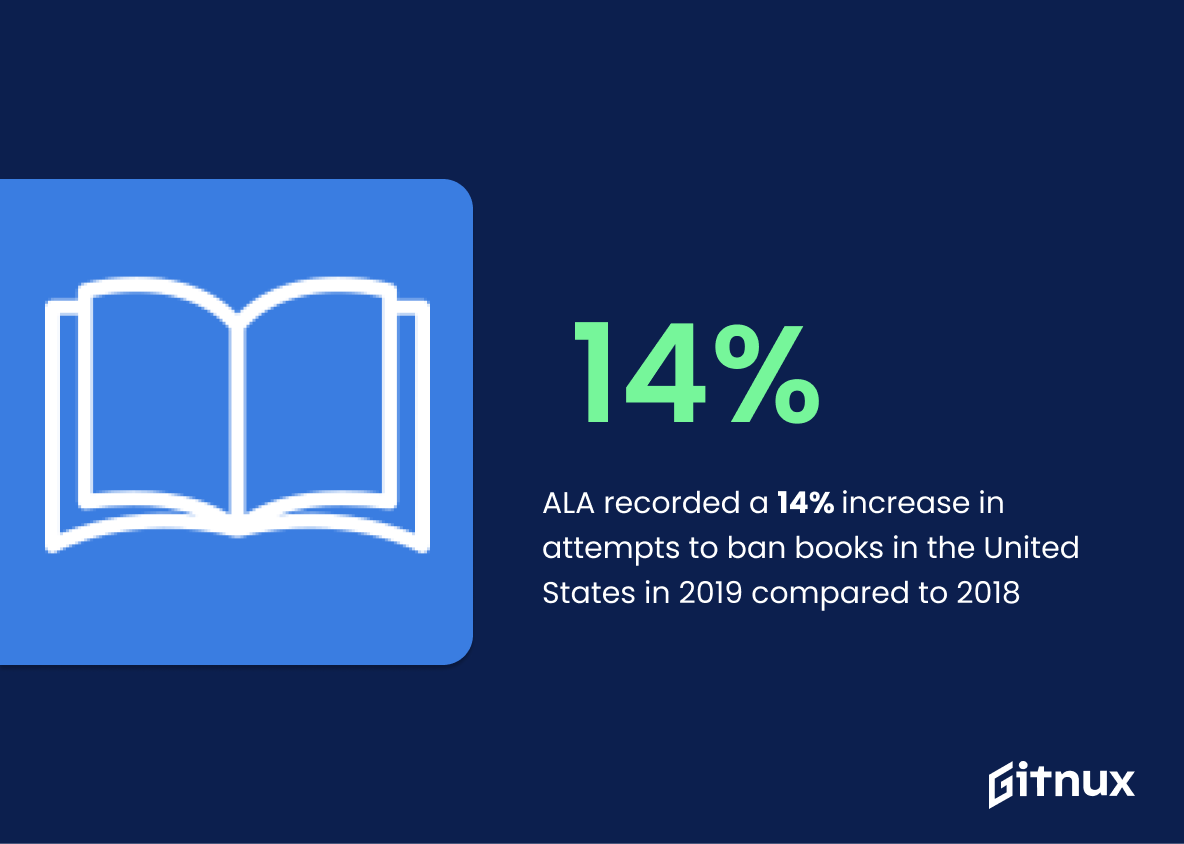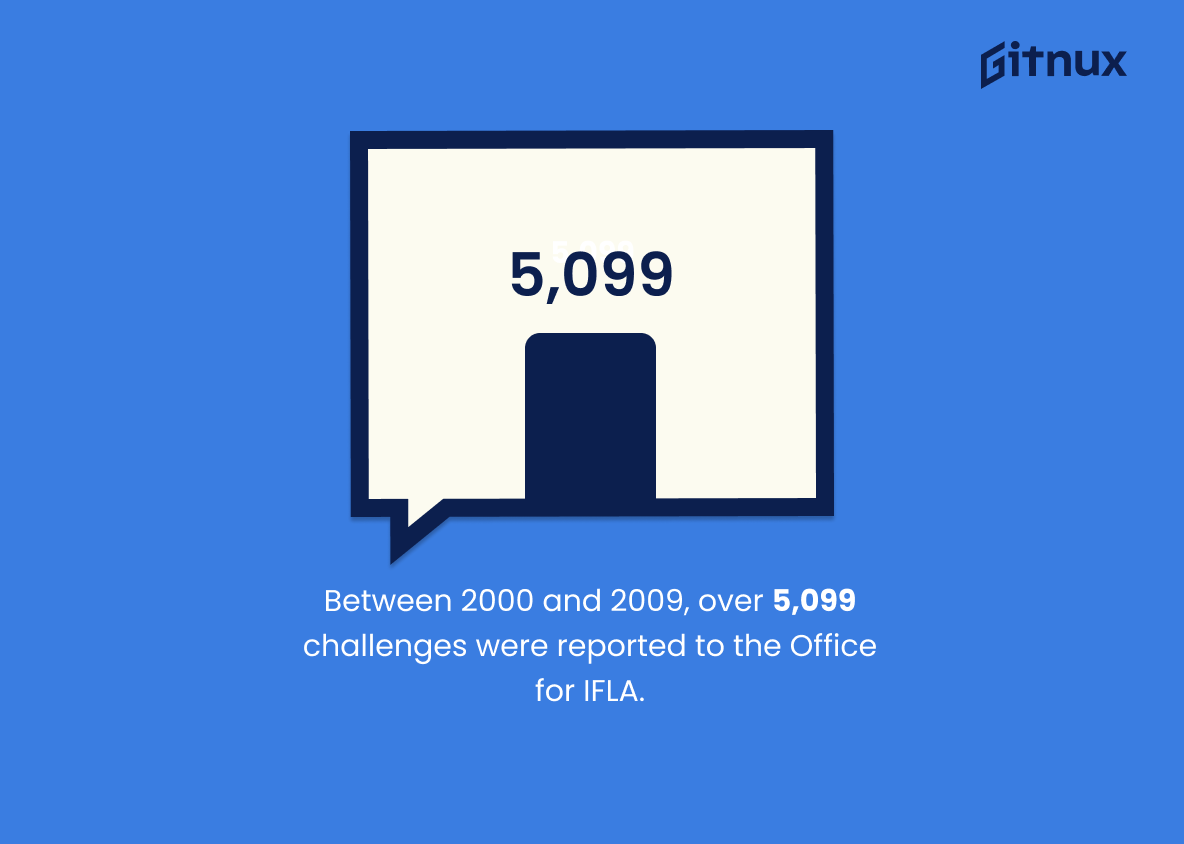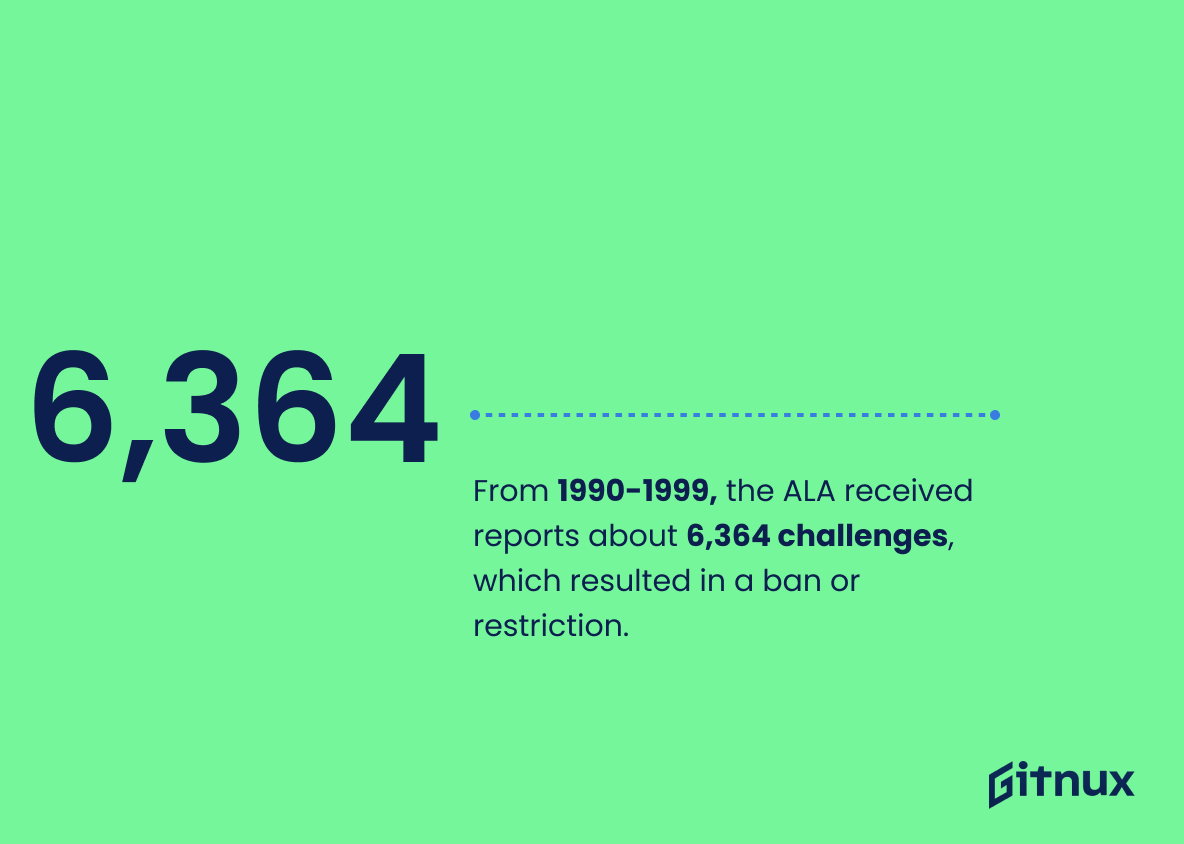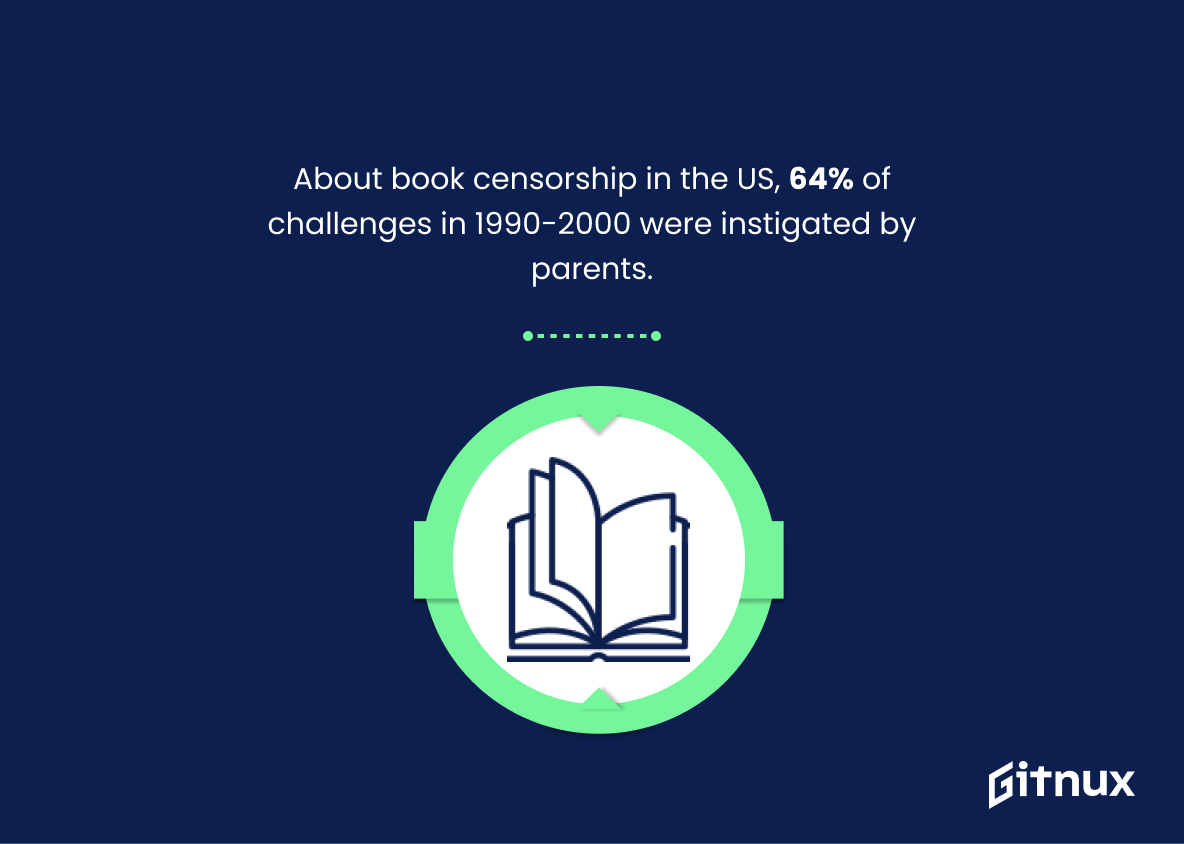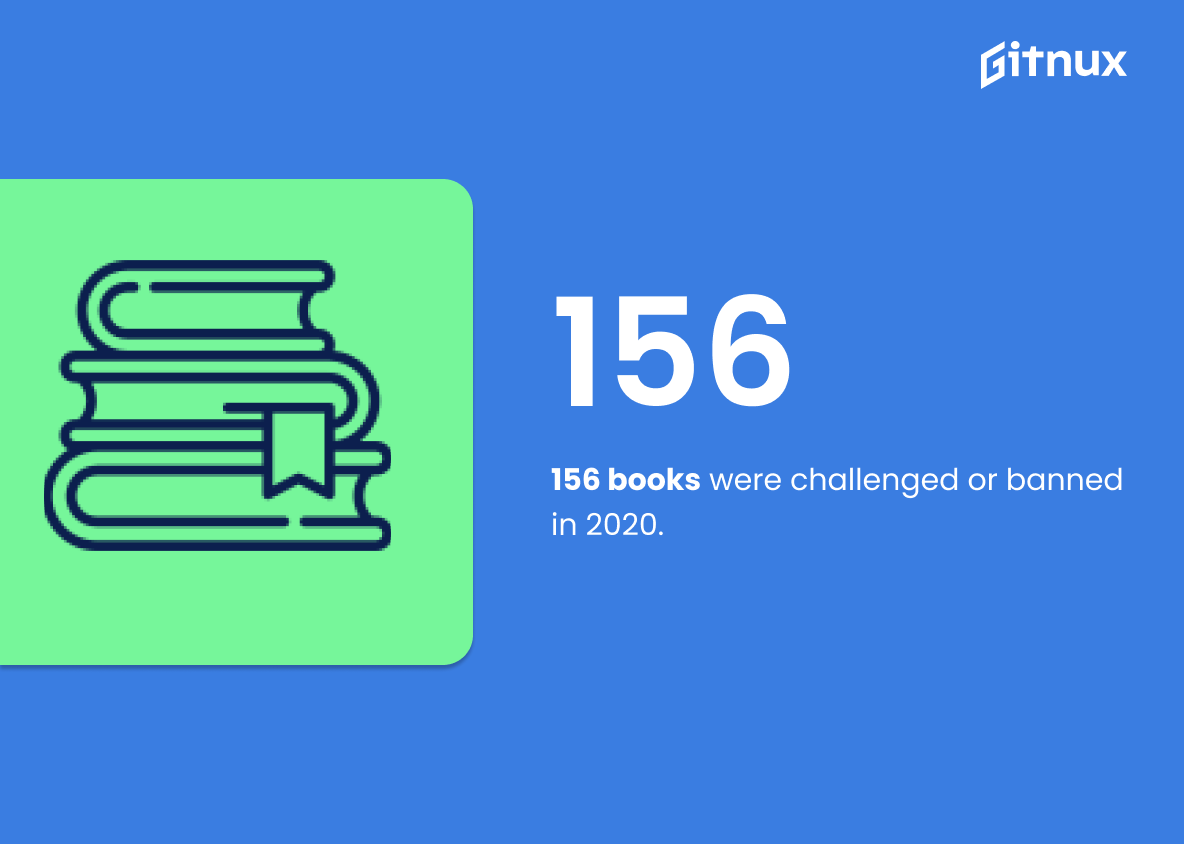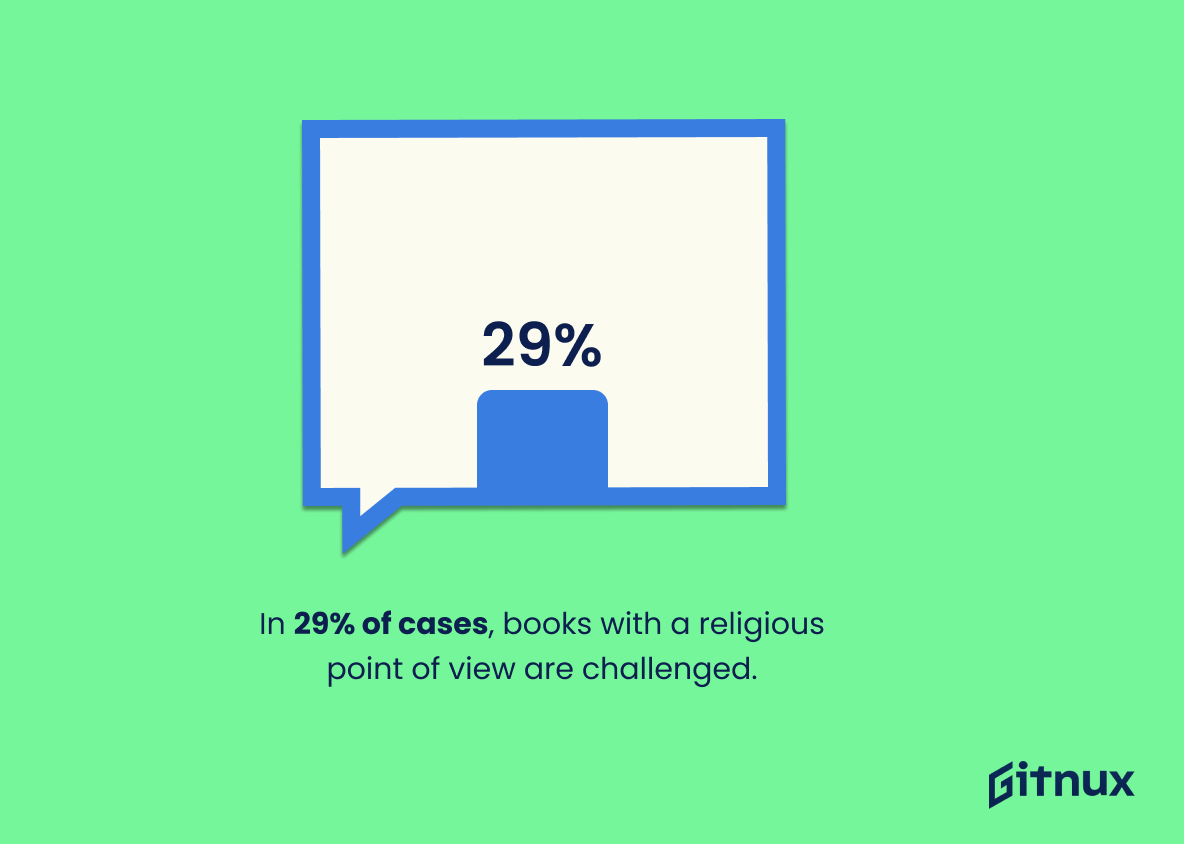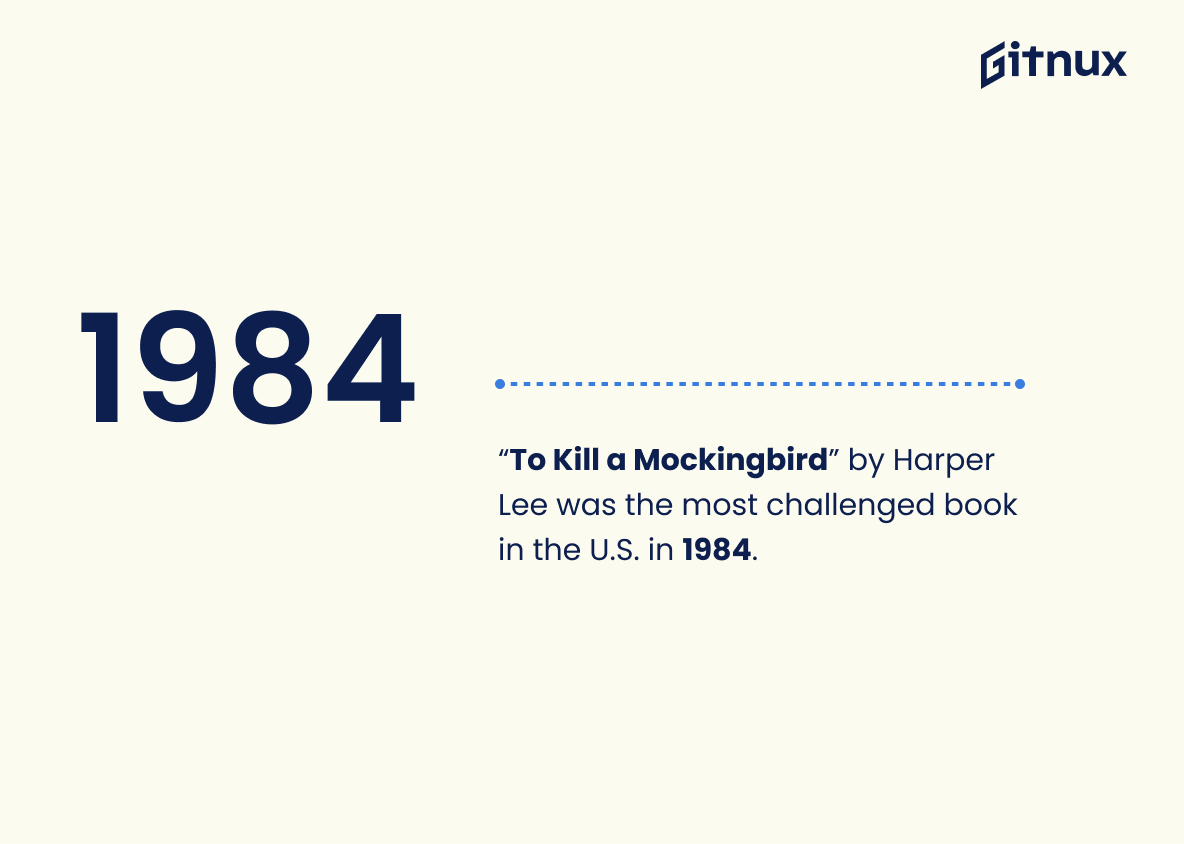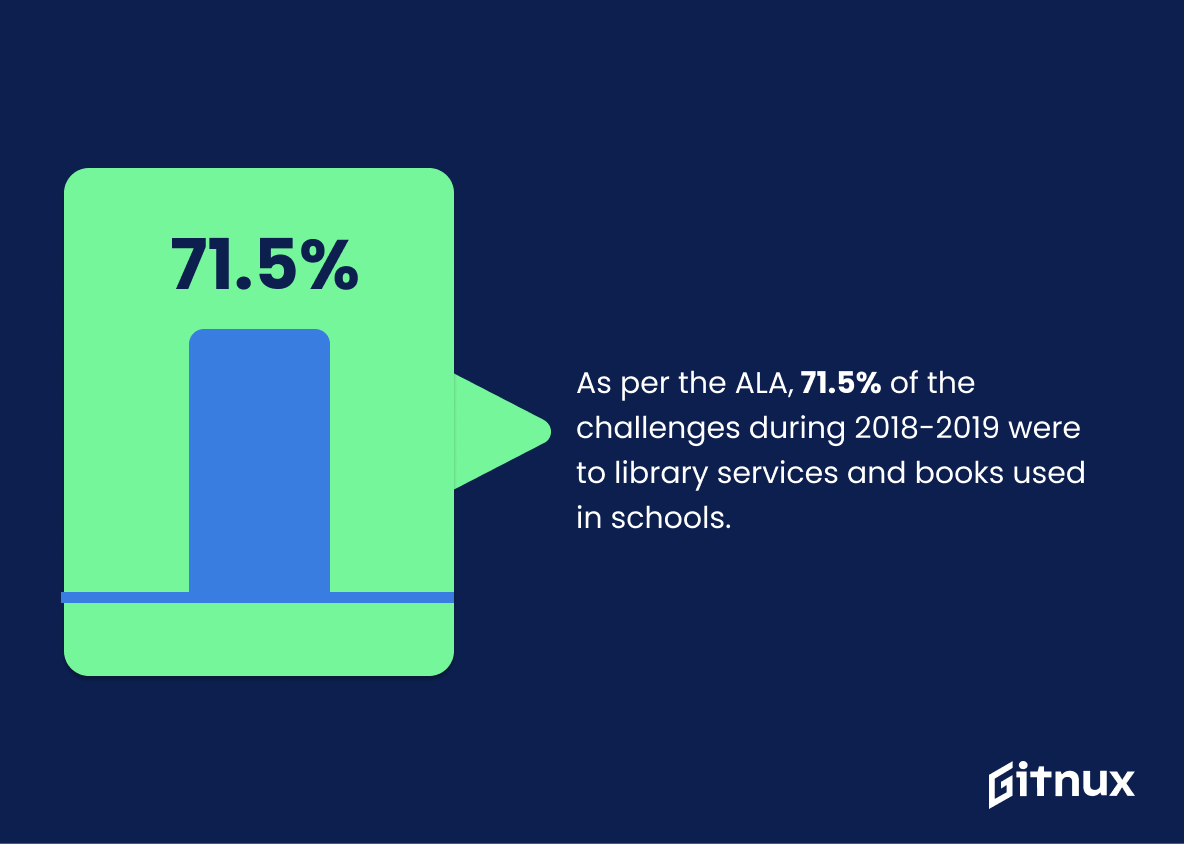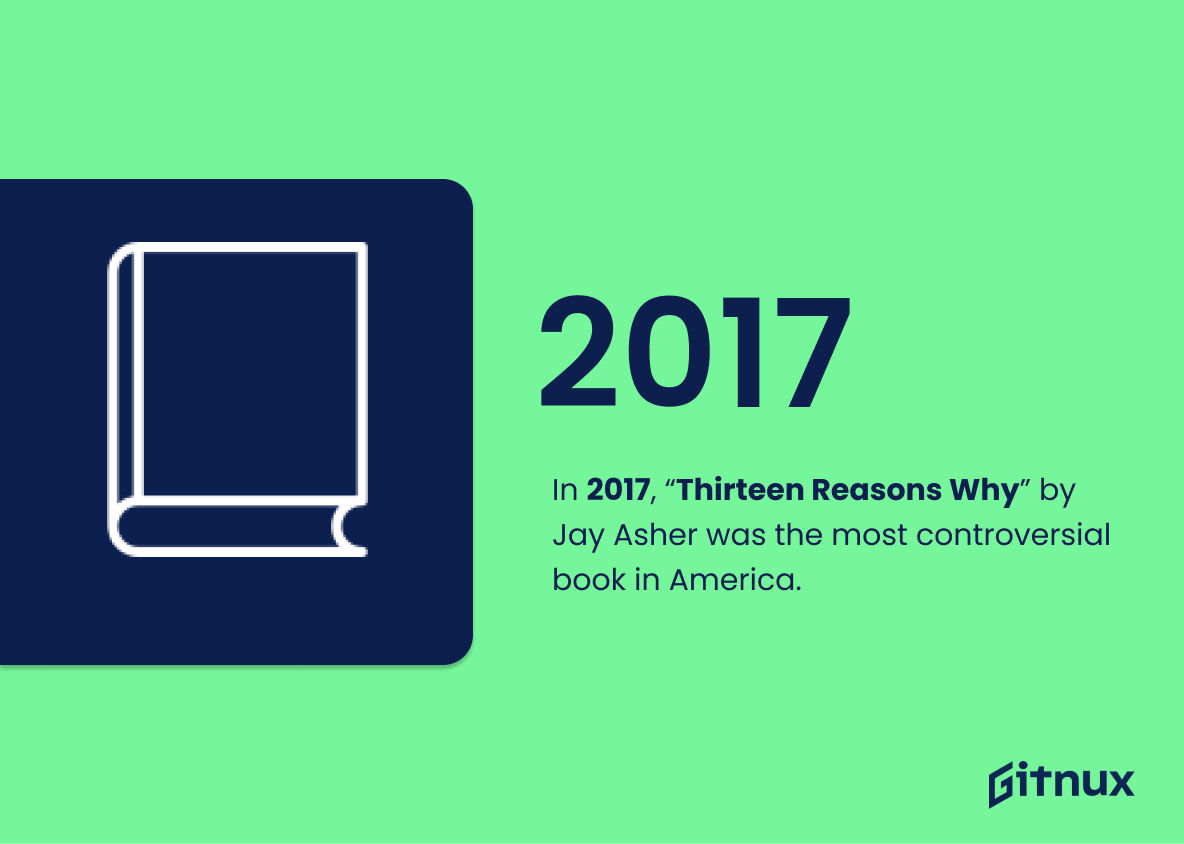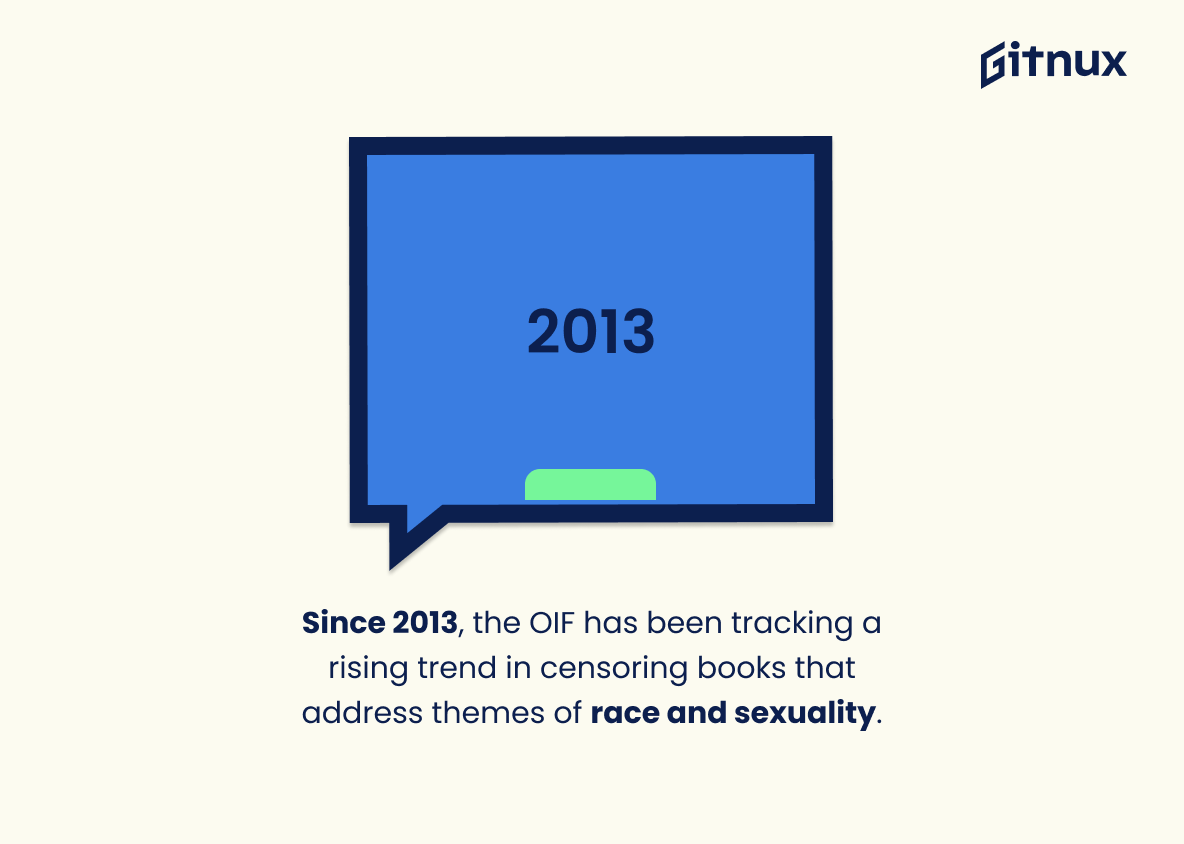Every year, numerous books are quietly shuffled off the literary stage, removed from libraries, bookstores, and schools, leading to a phenomenon commonly known as book banning. It is a compelling and contentious subject that has sparked conversations about censorship, freedom of speech, and the nature of artistic expression. Despite living in a global society that prides itself on promoting freedom and diversity, the reality is that countless books are banned each year due to various controversial themes or “inappropriate” content.
However, are we truly aware of the extent of this censorship? Welcome to our blog post, where we explore the jaw-dropping statistics surrounding banned books. We delve into the reasons behind these bans, which books are most frequently banned, and the implications this holds for both readers and the literary world at large.
The Latest Banned Books Statistics Unveiled
The American Library Association (ALA) recorded a 14% increase in attempts to ban books in the United States in 2019 compared to 2018.
Reflect on this enlightening nugget: The American Library Association (ALA) logged a noteworthy 14% uptick in attempts to ban books in the United States in 2019 compared to the prior year. When entwining this statistic into a blog post on Banned Books Statistics, it illustrates a disconcerting trend of escalating censorship attempts within that year.
Furthermore, it underscores the ongoing relevance and urgency of discussing, analyzing, and understanding the issue of book banning. Not only does it reflect societal attitudes towards freedom of expression and diverse ideas, but it also uncovers which topics are deemed contentious leading to their challenge or suppression. Possessing this information allows us to engage in a more informed dialogue about literary freedom, censorship, and the circumstances leading to variations in these statistics across years.
Between 2000 and 2009, over 5,099 challenges were reported to the Office for Intellectual Freedom of the American Library Association.
This numerical revelation vividly portrays a decade-long battlefield, where 5,099 challenges were filed against the bastions of knowledge – our libraries, to the intellectual Freedom Office of the American Library Association. This fierce outcry against free thought fuels our understanding of the magnitude of censorship attempts between 2000 and 2009, creating critical context for a blog post about Banned Books Statistics.
It juxtaposes controversial challenges on one hand, and freedom of expression and right to information on the other, thereby illuminating the battle lines drawn around banned books. This statistic unveils the scale of conflicts surrounding intellectual freedom and emphasizes the persistent struggle of ensuring uncensored access to content in the modern world.
According to the ALA, about half of all banned books are by authors of color or contain events and issues concerning diverse communities.
Delving into the depth of this statistic, it throws a stark spotlight on the alarming tendencies within the domain of censorship. Being able to comprehend that approximately half of all challenged or banned books are either authored by people of color or cover topics pertaining to diverse communities paints a candid picture of the ongoing issues concerning representation and freedom of expression.
It effectively nudges readers to consider the worrying implications of this scenario – the perpetuation of systemic bias, the suppression of marginalized voices, and the negation of their experiences. While censorship often poses as a safeguard against explicit content or sensitive themes, it’s crucial to ponder – are we, perhaps unconsciously, muffling the narratives that have the potential to broaden perspectives and enhance multicultural understanding?
This statistic serves as a stark reminder, a call to action perhaps, that the world of literature must strive toward a more inclusive, balanced, and uncensored space to truly allow for a plurality of voices and themes.
From 1990-1999, the ALA received reports about 6,364 challenges, which resulted in a ban or restriction.
Highlighting this figure illuminates an intriguing decade in the world of literature – from 1990 to 1999 – where the American Library Association (ALA) fielded an alarming 6,364 reports of book challenges. Each challenge marking an attempt to scrutinize, restrict, or completely ban certain literary material.
Thus, this statistic serves as more than just a number; it paints a vivid picture of a time when literary censorship reigned supreme, thereby encapsulating the historical prominence and societal significance of banned books. It amplifies the depth of dialogue on the issue in the blog post, reminding readers of the scale at which certain freedoms we often take for granted, like the freedom to read, can be contested.
In 2019, eight of the ten most challenged books in America were banned due to LGBTQ+ content.
In unearthing the fabric of our society’s perspective on diversity, this statistic articulates a vivid detail. It lays bare the unsettling reality that a significant proportion of the most challenged books in America in 2019—80% to be exact—were ostracized for carrying LGBTQ+ content.
Through the lens of this data, we can glimpse the controversial threads that shape our literature censorship, specifically how the inclusion of various sexual orientations and gender identities tend to spark disputes. Navigating through the terrain of banned book statistics, we stumble upon this statistic as a reminder of our ongoing struggle on the battlefield of acceptance and recognition, a sobering rainbow flag in the field of freedom of speech.
The most banned books of 2019 included “George” by Alex Gino, “Beyond Magenta” by Susan Kuklin, and “Last Week Tonight with John Oliver Presents a Day in the Life of Marlon Bundo” by Jill Twiss.
Spotlighting the titles “George” by Alex Gino, “Beyond Magenta” by Susan Kuklin, and “Last Week Tonight with John Oliver Presents a Day in the Life of Marlon Bundo” by Jill Twiss, which were the most banned books of 2019, provides an intriguing glimpse at the socio-cultural fault lines in communities across the globe. In analyzing the contentious status of such literature, we can decipher the underlying concerns, moral discourses, and themes that provoke significant disagreement.
Such a statistic helps us journey into the heart of censorship debates, fostering an understanding of the influences, biases, and power dynamics that inspire certain narratives to be suppressed. It also underlines the continuous struggle between the freedom of speech and perceived societal safeguards. Ultimately, closely examining these condemnations might stimulate larger discussions about cultural acceptance and information control across broader populations.
According to an infographic by Electric Literature about book censorship in the US, 64 percent of challenges in 1990-2000 were instigated by parents.
The data point in question – stating that 64 percent of challenges to book content during 1990-2000 were propelled by parents – weaves a compelling narrative in the broader tapestry of banned books statistics. It reframes the discussion by casting a spotlight on the significant role parents play in book censorship debates. In the vessel of a blog post about banned books, this statistic adds depth and nuance to the content, inviting readers to look beyond the institutional forces often associated with censorship and consider family influences.
It provides a critical pivot point from which we can delve into motivations behind censorship, trigger points, and the power dynamics involved in determining ‘acceptable’ literature. The inclusion of such statistical data enhances the discourse, offering a comprehensive exploration of contentious book ban issues.
According to ALA’s 2021 State of American Libraries Special Report, 156 books were challenged or banned in 2020.
Highlighting the ALA’s 2021 State of American Libraries Special Report data, wherein 156 books faced the baton of adversities as they were challenged or banned in 2020, serves as a pivotal touchstone in our expedition through banned books statistics. This numerical inkling offers a profound insight into the extent of censorship across the United States during a single calendar year, underlining the magnitude of the freedom of expression debates.
Ilustrating the breadth and weight of this issue, it stands as a quantifiable testament to the contours of intellectual and creative freedom being negotiated, or in some instances, negated at various institutional levels. As our journey continues through the landscape of banned books, this figure will guide us, spotlighting the contours of the issue at hand.
Across 2010-2019, one of the most commonly cited reasons for book challenges includes the inculcation of a “religious viewpoint,” mentioned in 29 percent of cases.
Delving into the depths of banned books statistics reveals a captivating datapoint: up to 29 percent of book challenges during the decade from 2010-2019 revolved around the inculcation of a ‘religious viewpoint’. A statement that uncovers the secretive layers of societal sensitivities and implicit bias. This datum serves as a valuable piece, unmasking the often unseen undercurrent of religious friction in literature censorship.
Simultaneously, it underscores the pivotal role of religious beliefs in shaping narrative receptivity. Thus, in a blog post exploring the multifaceted world of banned books, this significant statistic infuses a more profound comprehension of one of the vital forces driving censorship trends.
“To Kill a Mockingbird” by Harper Lee was the most challenged book in the U.S. in 1984.
Illuminating the heart of our conversation on banned book statistics, let’s delve into “To Kill a Mockingbird.” Harper Lee’s iconic masterpiece has fueled countless debates, standing as the most contested book across America in 1984. This feather in its cap reflects the cultural and societal tensions of that moment in history.
It brings into focus the ways literature can provoke, question, and unsettle its audience, particularly those who hold the authority to dictate accepted reading material. By neglecting to overlook this illuminating piece of data, we’re guided into a deeper understanding of how literary censorship ebbs and flows with societal dynamics.
As per the ALA, 71.5% of the challenges during 2018-2019 were to library services and books used in schools, while 23.49% were to materials in public libraries.
Delving into the realms of Banned Books Statistics, let’s illuminate the significance of a certain statistic brought forward by the American Library Association (ALA). It reveals that an astounding 71.5% of the challenges during 2018-2019 were directly aimed at library services and books used in schools, while materials in public libraries witnessed challenges at a rate of 23.49%.
Such data fundamentally underscores the conversational landscape where censorship of reading materials is concerned. Notably, the statistic carries an ominous echo, indicating that schools, the very institutions intended to advocate for open learning and intellectual exploration, are becoming epicenters of censorship, given the higher percentage of challenges they experience in comparison to public libraries. This piece of information, thus, kindles a discussion on the necessity for nurturing an unrestricted academic environment that promotes intellectual growth rather than stifling it.
On the flip side, the 23.49% figure is a reflection on the state of our public libraries, signaling a clear need for vigilance against any form of undue censorship within these repositories of democratic public access to knowledge.
This delightful data dive thus provides a dual-paned mirror, reflecting both the current state of censorship in our schools and public libraries, and nudging us to reevaluate our stance on freedom of information.
In 2017, the ALA’s Office for Intellectual Freedom tracked 354 challenges to library, school, and university materials.
A tapestry of thoughts, ideas, and expressions can be weaved from this one statistic – that in 2017, an alarming 354 challenges to library, school, and university materials were recorded by the ALA’s Office. Like a powerful litmus test, this figure reveals the pulsating dynamics of censorship and freedom of speech as they play out in our society.
As you dig into the depths of Banned Books Statistics, imagine each of these 354 challenges as a stroke against intellectual freedom, an endeavour to silence voices and sanitize narratives. It’s a glimpse into the battleground of ideas, providing critical context to the heated dialogues around banned books. It’s not just a number; it’s a compelling narrative wrapped in a numerical cloak, provoking us to ponder, question and understand the contours of free expression and the forces that seek to confine it.
In 2017, “Thirteen Reasons Why” by Jay Asher was the most controversial book in America, with calls to ban it from schools due to its discussion of suicide.
Illuminating the shadowy periphery of censorship, the stat involving “Thirteen Reasons Why” underscores a societal paradox. On one hand, the book offers a candid exploration of a hard-hitting topic—suicide—that is often skimmed over in the school curriculum. On the other hand, its such raw exposition has stirred a maelstrom of controversy, placing it at the epicenter of America’s most disputed books in 2017.
In the vast cosmos of banned books statistics, this particular data point offers a captivating snapshot of cultural tensions. It spotlights the tug-of-war between fostering knowledge and safeguarding young minds—while reflecting societal attitudes towards topics deemed sensitive or taboo. Thus, if this blog post aims to demystify the web of banned books or unravel the propellers of cultural censorship, then this statistic forms a critical thread in this engaging tapestry.
Since 2013, the Office for Intellectual Freedom has been tracking a rising trend in censoring books that address themes of race and sexuality.
Illuminating the path towards a more comprehensive understanding, the statistic indicates a noteworthy change in the landscape of literary censorship since 2013. By highlighting the upswing in the suppression of books discussing race and sexuality, it paints a candid image of the prevalent societal anxieties and biases rooted in these sensitive areas.
Within a blog post about Banned Books Statistics, this fact seizes center stage as it opens a dialogue about the direct and indirect influences steering the direction of censorship, ultimately promoting the necessity for free expression and intellectual exploration in our literature.
Conclusion
In conclusion, understanding banned books statistics speaks volumes about our society. It underscores the continuous struggle between freedom of expression and societal norms. Despite the controversy, these numbers highlight the importance of literary freedom and diversity in literature. Regardless of differing views, many believe that banned books open up conversations on the complex issues they address.
The statistics can serve as a beacon, guiding us towards an informed dialogue about censorship, creativity, and the power of words. We should view these banned literature not as threats, but as opportunities for discussion, reflection, and growth. Always remember that every banned book read is another strike against censorship.
References
0. – https://www.www.aclu.org
1. – https://www.www.bannedbooksweek.org
2. – https://www.www.ala.org
3. – https://www.pen.org
4. – https://www.www.theguardian.com
5. – https://www.electricliterature.com
